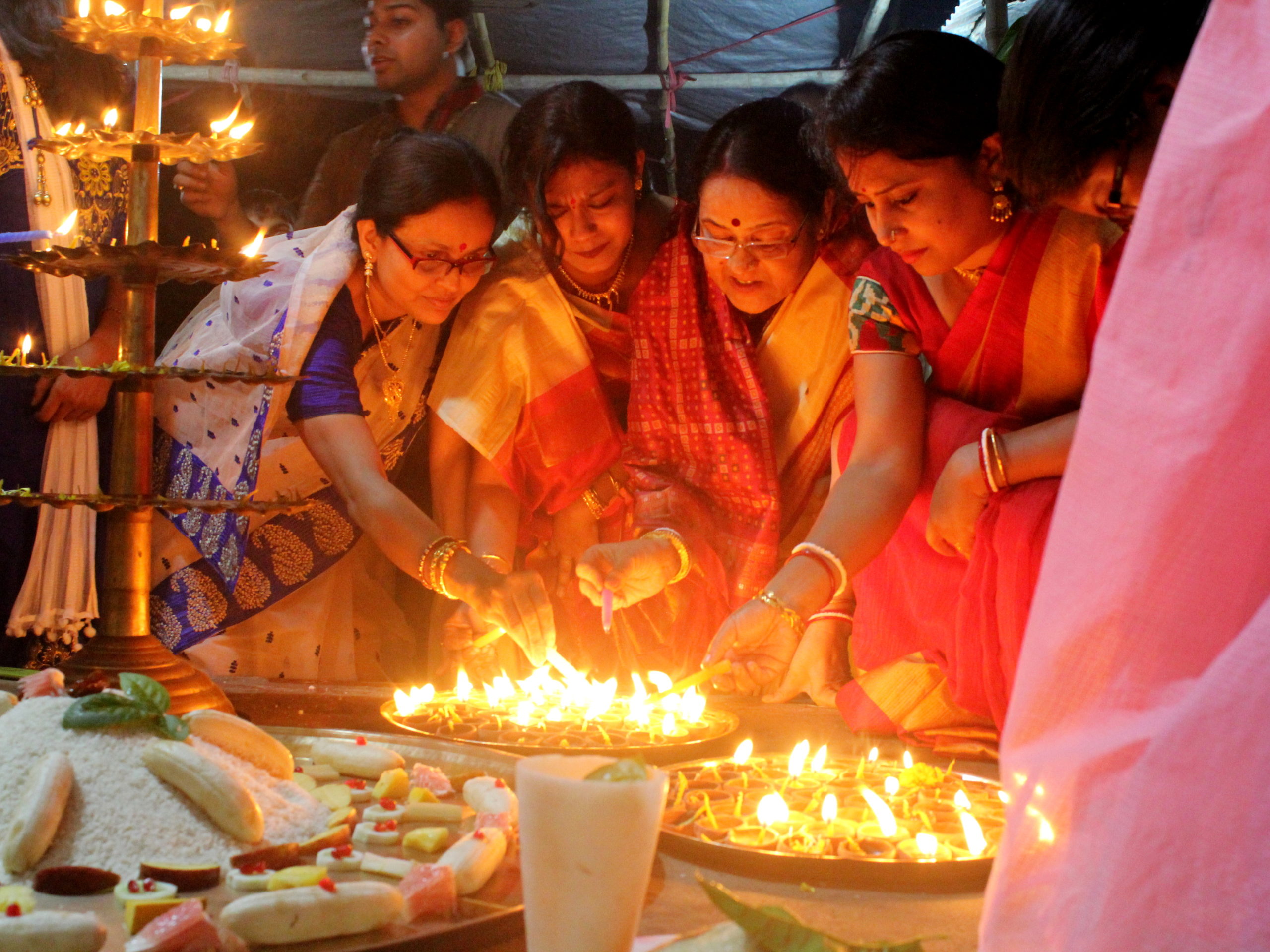The charm of Durga Puja Kolkata is known to by far all and many. But, this article shares about the traditional Durga Puja that’s still performed in villages. It elaborates the aroma of sandhya arati, and mysticism surrounding dhunuchinaach.
A reflection
About two years ago, we self-invited ourselves to be a part of the Durga Puja celebrations of the Datta Household of Mathmalaypur, located in the Hooghly District of West Bengal. One of our close friends happen to be a member of this household and it was on his insistence, we, two non-religious persons, decided to spend two days observing the core rituals practiced to venerate Goddess Durga. There was, however, another factor which propelled me. My mother’s one of the last wishes was to observe a family Durga Puja in her lifetime. Since she couldn’t before she died, I had to.
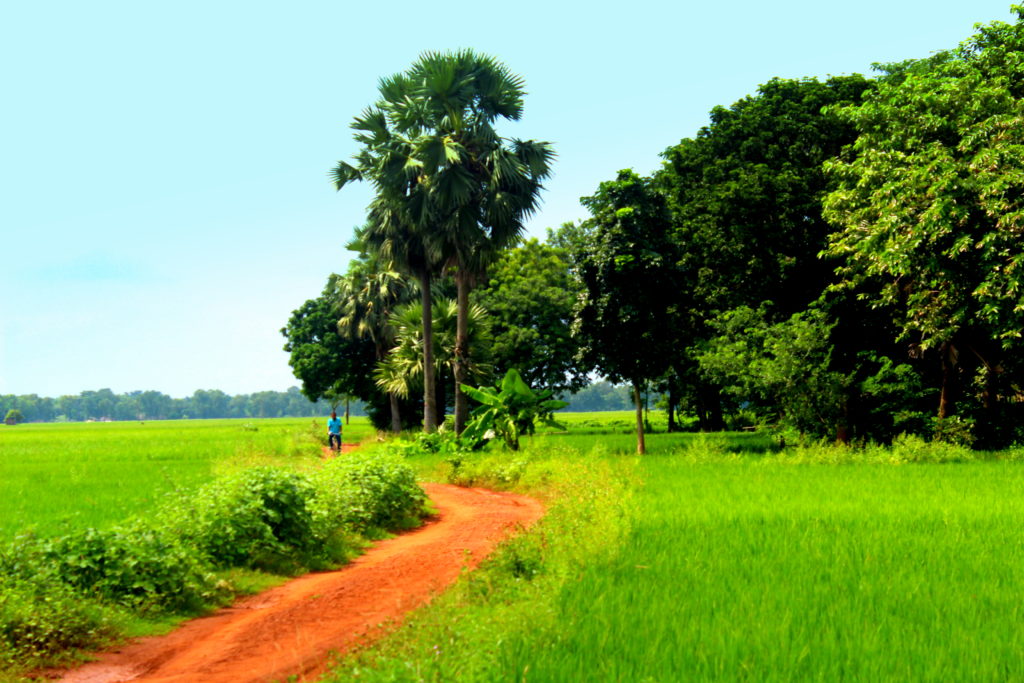
It was an Ashtami afternoon. As we got down from a local train, a cab was waiting for us at the station. The autumn heat has begun to fade out as we advanced to the house on a red gravelly road in between the swaying green paddy fields.
The cab parked in front of a nondescript house, where our friend was waiting to welcome us. The house, partially made of mud and partially of concrete, seemed as if it has come out from the pages of Bengali folklores or quintessentially Bengali stories that had a village in its backdrop. Straw roofs, an open space in the middle housing indigenous paddy storage made of straw termed locally as a morai or dhaaner gola, a pond in the backyard, and a Thakurdalan or the designated space where Goddess Durga is worshipped every year by the household members.
Related: স্মৃতির দুর্গাপুজো – ২০১৭
Gradually, we started meeting the other members of the household. Each of them, be them the elder members or the younger generation, were very warm. It was their warm gesture which made us feel at home, almost instantly. Our adda sessions continued till all of us were alerted about the Evening Arati time. The lady brigade of the house took me with them to the Thakurdalan, where they were preparing the nitty-gritty of the Arati, as well as the Sandhi Puja which was to follow later in the evening. I couldn’t say a hurting ‘No’ to their excitement when they made me a part in their preparations. I might not believe in the concept of deities and their invocations, but, at the end of the day, I am a human being and I have no right to disrespect the feelings of the people who put their faith in religions and rituals. While helping them, I began to jitter initially. Images of my mother worshipping in our house flashed my mind several times when I lined up the unlit earthen lamps to be lit during the Sandhi Puja. However, my clumsiness, when got encouragement from the brigade, became a sigh of relief to me.
With the dimming of the Sun, the Arati started. Our friend and a few other family members took turns in dancing with the earthen incense burners or Dhunuchis. The remaining, non-dancing members, rang the kanshor-ghontas, along with the drum beats by the dhakis who came from a nearby village. The in-house priest danced with the panchapradip, meanwhile. The Arati rituals transported me to a state of trance, for a short time. It is said that the high pitched songs are sung or sounds made in any religious place, can briefly bring upon a state of trance in the people visiting these places. This state of trance can turn one’s mind blank for a few seconds, and that’s the time when the one comes near to God. I don’t know whether I could go near to someone called God, whom I don’t believe, during the brief state trance felt by me then, but my mind weary from thoughts of my late parents felt more relaxed thereafter. After the Arati, the members along with us sat together on the floor of the mud house for the evening muri–alur torkari. The food was filling, nevertheless, but, what filled our hearts was the inherent humility in the household. One can achieve great feats in life, but, to remain grounded with humility, is what makes the person a Man, on the real sense of the term. It’s difficult to stay humble when you start possessing material wealth, but, the Datta household members, carried this attribute on their sleeves with elan. They didn’t have to pretend, they truly showed us, how to be.
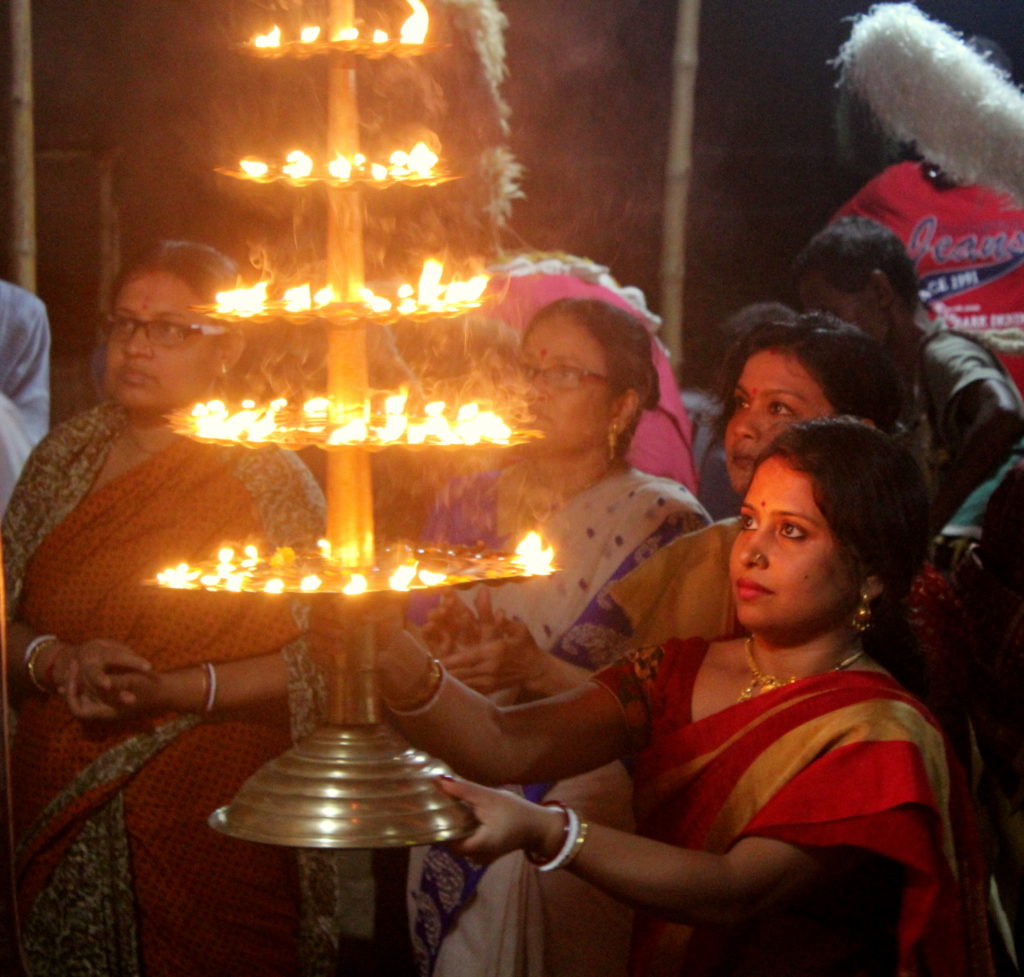
Chitchats followed after we had done with the light evening meal. We began to gather again near the Thakurdalan, for the Sandhi Puja rituals. The Sandhi Puja happens to be a significant ritual invoking the mythological moment when Goddess Durga won over Mahisasura. My mother used to say that if the Sandhi Puja rituals are done with great respect then the clay idol of Goddess Durga appears to be alive, albeit for a minuscule time. I recalled these words when the priest began chanting the hymns. The drums started beating a different rhythm, the kanshor-ghontas followed, marking the end of the Sandhi Puja ritual and the 108 lamps were lit. The face of the idol shone in the lamp lights. It appeared as if the Goddess had come alive. Was it? Or, maybe, I was briefly hallucinated by the drum beats, the constant ringings of the kanshor-ghonta, and the profound Sanskrit chants of the priest which literally meant to invoke Goddess Durga to arrive and fight the evils. Whatever it was, I found myself to be quiet for the rest of the night. “Faith can move mountains”, they say, and here, I could feel it, truly.
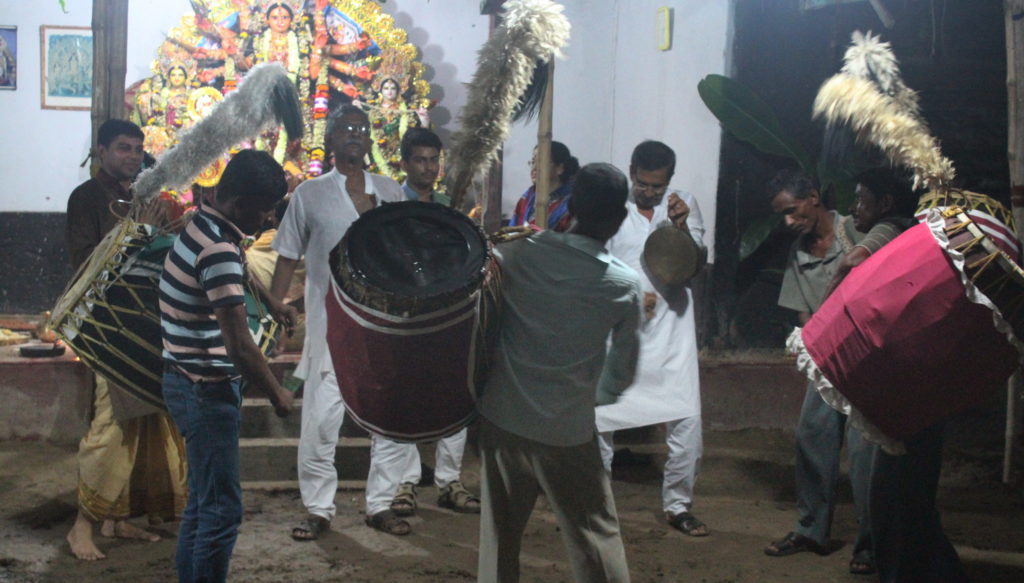
On the next day, Navami, my eyes opened when a whiff of fragrant Shiuli or Night Jasmine, blew across my face. The intoxicating fragrance made me ran to its source and oh! what did I see there?! A flowery rangoli depicting Rose made from the Shiuli flowers, upon the brown mud floor. The Shiuli trees, the ponds, and the lush greenery beckoned us to explore the area. We could spot a few local birds here and there. One of our friend’s family members showed us around their premises. The paddy fields they own and the cowshed which housed cows many years ago. After the brief tour, we gathered in the Thakurdalan again. The Navami puja had started by that time. The same place looked so different that morning. The illuminations from the Ashtami evening had culminated in a vibrant Navami morning.
Many visitors like us had come from far and wide. Those who were accustomed to Durga Puja Kolkata seemed mesmerized here. We chatted, they chatted, and the chatters never stopped. To me, the Durga Puja had always been a festival which brought us together from different walks of life and that day the entire household became the same milieu which we long for, every Autumn. Our never-ending chatters would have continued if not we were called for the lunch, at the same place where we had eaten in the evening, all of us together, sitting on the mud floor. The menu was not special. Who among us cannot have a platter of mutton and rice whenever we want, generally speaking? But the food served on that afternoon was made special by the people there, our hosts, the batch-eating on the same floor and the overall ambiance.
We left the place, after lunch, with a heavy heart. Our mundane lives, our artificially glittering Kolkata was beckoning us. As we sped past the green paddy fields again, I knew I had to go back again, there, maybe during the next Autumn again, just to feel the same, twice.
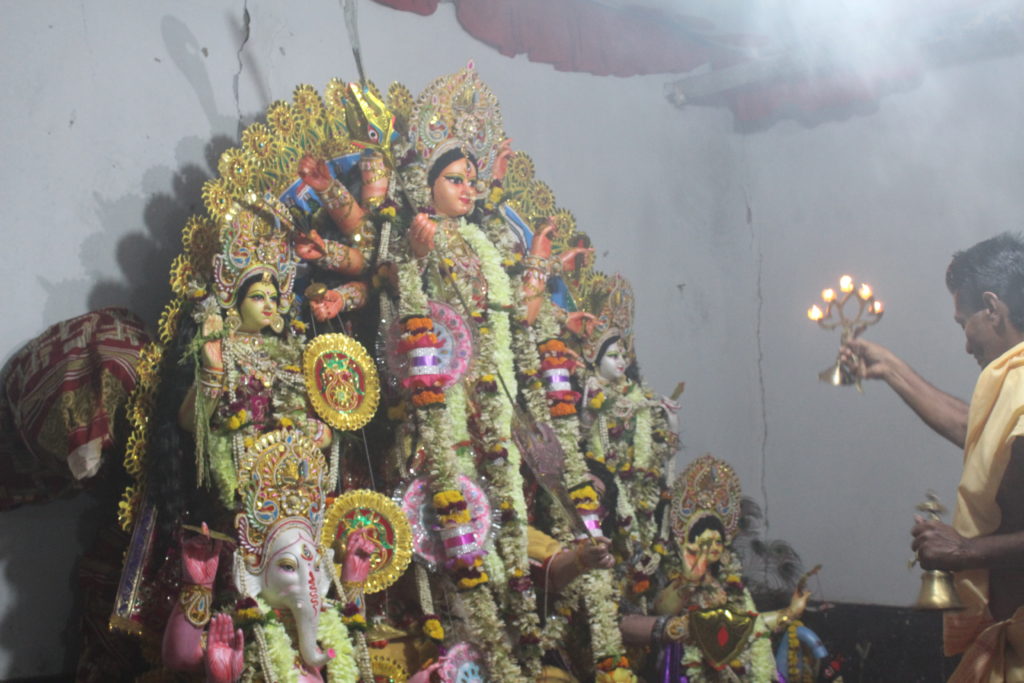
P.S: Sometimes, it is not easy to explain some events with mere words. This event was of that kind. It was foolish of me to even try, but I could not stop myself to write about that one and a half-day spent in the Datta household, during an Autumn Durga Puja.

